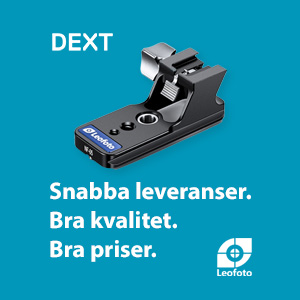Lite intressant om AF-teknik
Jag hittade lite intressant info om jämförelse av Sonys och Canons AF-teknik.
http://www.eoshd.com/2016/02/sony-4...-the-differences-explained-new-a6300-af-test/
Ett citatutsnitt:
Sony 4D AF versus Canon Dual Pixel AF
Canon have patented two on-sensor phase detect AF systems. Hybrid CMOS AF and Dual Pixel AF.
On paper it seems the Sony A6300’s sensor has more in common with the inferior Hybrid CMOS AF than Dual Pixel AF but real-world performance seems to suggest otherwise. The Sony A6300 has a new image processor and sensor – it has a lot of tricks up its sleeve.
Canon’s Hybrid CMOS AF replaces a few of the red, green and blue photodiodes entirely with AF phase detect pixels, which aren’t used to form the image. Instead they are 100% devoted to the task of phase detect AF like on the Sony A6300.
Dual Pixel AF on the other hand turns an ordinary light capturing RGB photodiode into a phase detect AF sensor without altering its ability to also capture RGB image data. Therefore every pixel can be a phase detect AF point.
The way this works is that every RGB diode used to capture light is split into 2 halves – the left and right diodes work like two human eyes to determine focus. The sensor also uses modified micro lenses to direct light into these two separate diodes.
Then the image information is summed from the two diodes to create one RGB photodiode.
On the Sony A6300 the 425 photodiodes substituted by AF pixels don’t create dead pixels in the image due to the way a Bayer CMOS sensor works. Bayer is a matrix of red, blue and green photodiodes and a system of interpolation. Each pixel on a bayer sensor only captures 1/3rd of the colour information for any given point in the image – the final pixel is actually created by interpolating data from neighbouring pixels. For example a green pixel is combined with information from neighbouring red and blue pixels. The result is less resolution and colour accuracy but a faster running sensor which can also do tricks. 425 missing green photodiodes out of the millions on the sensor just need to interpolate from their neighbours a little more.
Although Dual Pixel AF is the superior technology, on a Canon DSLR it only covers 80% of the frame (and much less on the C300). It is not 100% like Samsung’s version on their S7 smartphone and it doesn’t go into the edges like Sony’s system on the A6300.
Unfortunately for video users to make use of this feature we must sacrifice image quality (in the case of the 70D and 80D without 4K or LOG) or features. Otherwise one has to spend 10x more than the cost of a Sony A6300 on a C300 just to get back LOG, sharp 1080p and a broad range of video features, or 6x more on a 1D X Mark II to get back Super 35mm 4K image quality, which in technical terms means that although Canon’s implementation of the technology is A-ok, the marketing of it is highly targeted at Video Oligarchs and people who like moire.
Something else to take into account is the speed of the bus between the camera mount and lens. The EF lens range was developed a long time ago and the communication protocols between the AF motors and the camera sensor are very basic. On the newer mirrorless cameras not only are the lens AF motors quieter and faster than on EF lenses there’s less latency on the bus.
So although the A6300’s system may seem like it has more in common with Hybrid CMOS AF than Dual Pixel AF, there are many other variables which influence AF performance for video – the lenses certainly are a big factor.
The other is the image processor itself. As well as the forth dimension of time being utilised to predict the movement of a subject, it uses a very high frame rate in live-view mode for stills so that AF samples are taken from the sensor at a quicker rate. Indeed this also makes 120fps full HD possible on the A6300, a feature lacking entirely from the Canon 80D.






